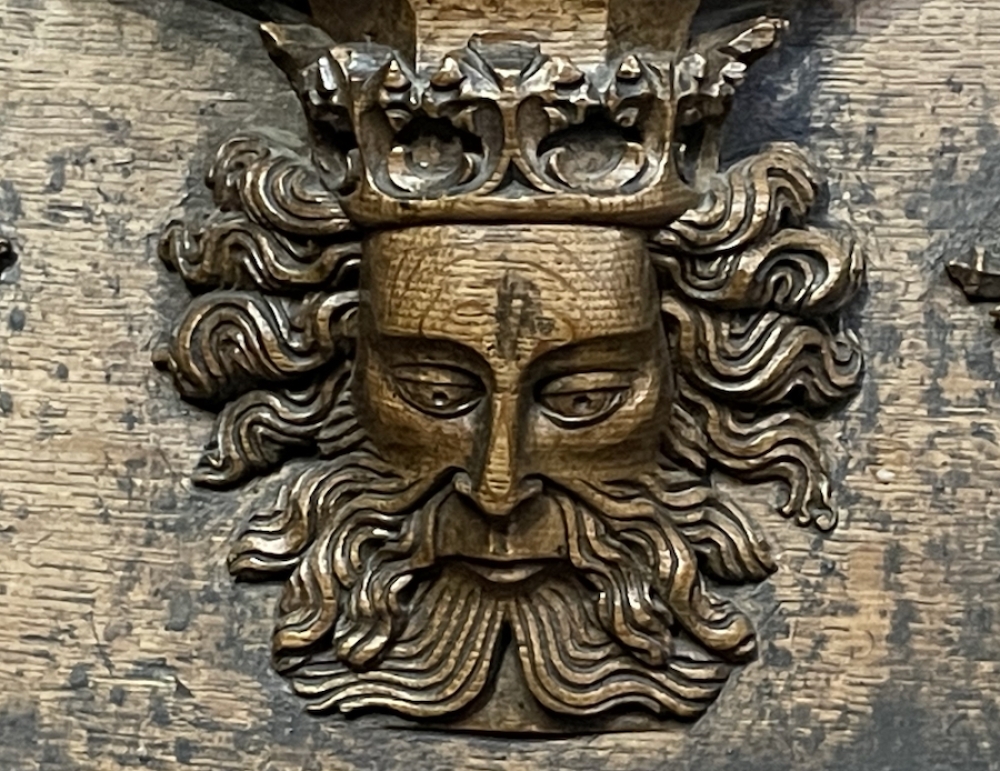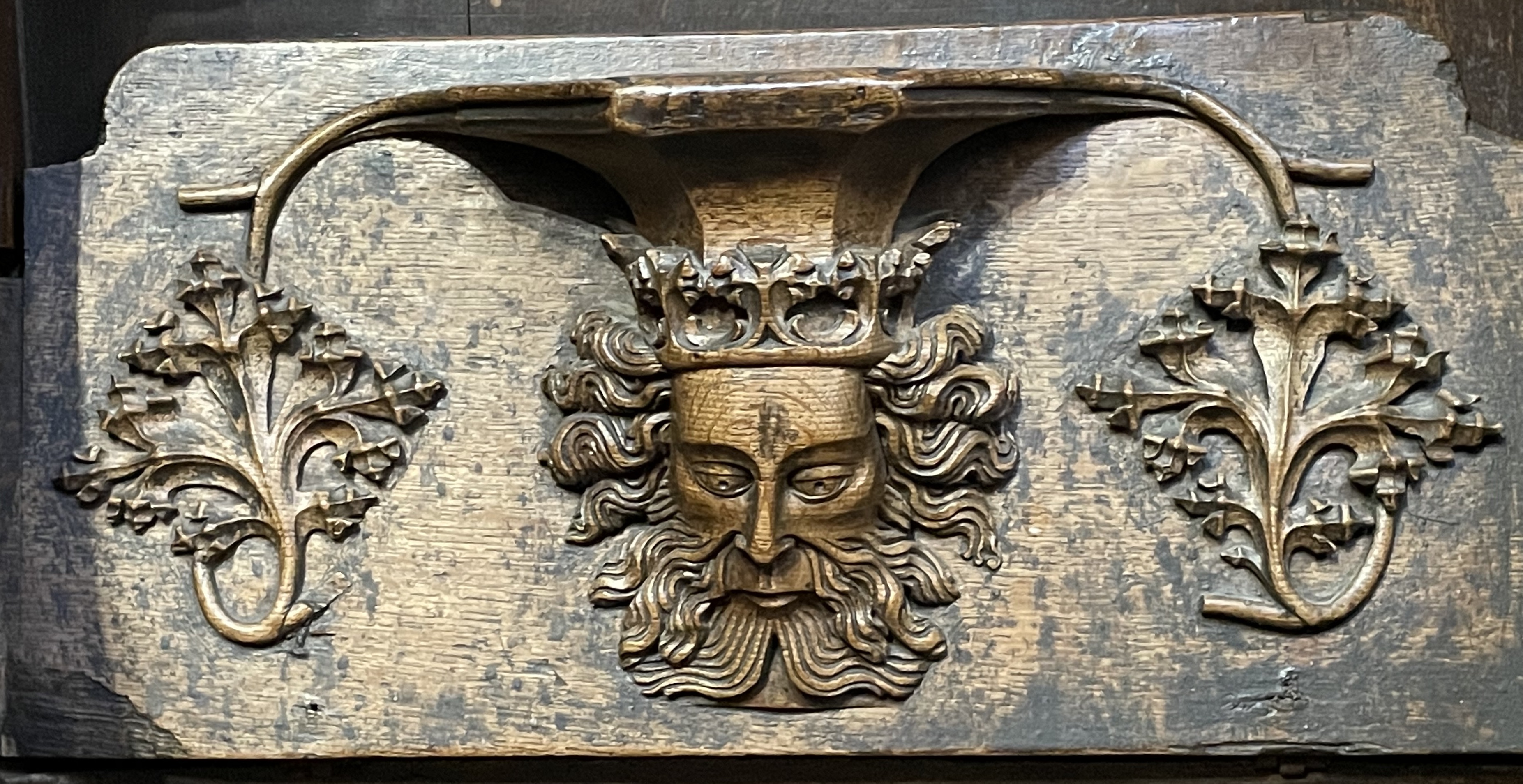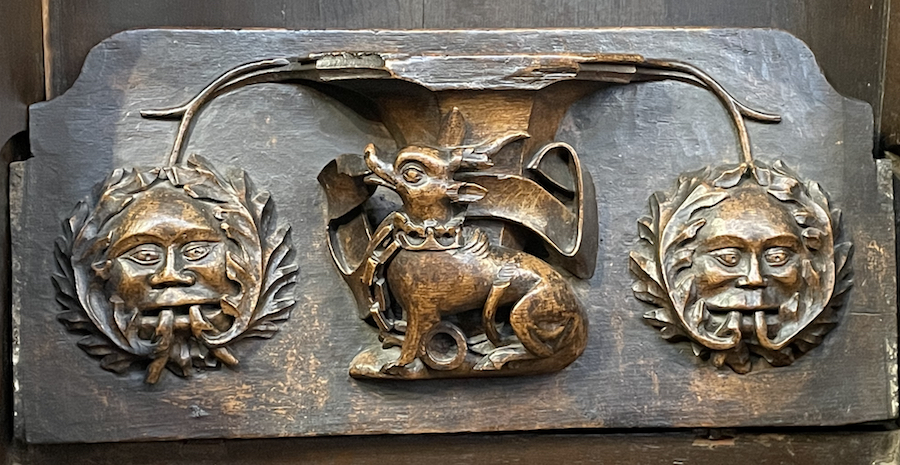Misericords - Windows into the Carving Past
16.12.22

Reading time: 1:45mins.
So, what is a 'misericord'?
Imagine you're a medieval monk. You have to chant and sing the daily 'offices' from the choir stalls of your church, which have to standing for hour after weary hour, day and night.
And it’s hard work! Especially if you are somewhat old or infirm.
Would that someone took pity on you.
You look down.
Your choir seat is hinged and has folded up as you stood and... Wow! Under the raised seat is a little ledge or shelf that you can perch on. You take the weight off your poor old bones and though you might look a little shorter, you will still appear to be standing and now, literally uplifted, you can keep on singing.
This raising seat with it’s little ledge or shelf is called a misericord: a 14th century Old French word from the Latin miserēre to pity + cor heart. So, a ‘mercy seat’.
Misericords are to be found throughout Europe. In England we have many superb examples. Not far from where I live on the Welsh Marches is the church of St. Laurence, Ludlow, Shropshire, glorified with one of the largest collections of misericords in any parish church.
Here’s one from St. Laurence's:
The 'King's Head', carved sometime shortly after 1425. You can see the little shelf for sitting on - but look what the medieval carver has done to the supporting wood underneath:

What compassionate person thought of that lifting seat with its little ledge was surely blessed by the monks of the choir.
They were also blessed by medieval woodcarvers.
The misericord seat with its little perching ledge allowed the woodcarvers who made them to let loose their imaginations in astonishingly skillful ways. Heraldic, religious, moral, satirizing, bawdy and mythical themes abound. It's truly amazing what they got away with!
Some time ago I took inspiration from this misericord from St Laurence to step into the carver's shoes and carve a green man based heavily on this one:

You can find it on my website here.
Why the Green Men? Who knows. But you can find out more about the heraldic content of this particular misericord here.
Outside of the UK misericords are not well known, but they should be. I wanted to sing the praises not so much of these misericords as of the woodcarver and the woodcarvings themselves.
Carved without power from a single, solid block of oak and with tools make by blacksmiths. We see nothing but tours de force: feats and displays of strength, skill and ingenuity. We don’t know the names of these long-gone carvers but they are the predecessors of we carvers today. Inspiration that they give us lives on.
And here's the thing:
The way I carve, the way I was taught and the way I teach is in the direct lineage of these carvers, 600 years ago.
Resources:
- If you are a beginner or would like to join this tradition, check out our Beginner's Course.
- If you'd like to see my work as 'one of a dying breed of Green Man carvers', check out the video: Chris on the BBC.
- Here is a website that also includes a timeline and gazetteer of misericord development from some 150 locations worldwide: https://www.misericords.co.uk/index.html
